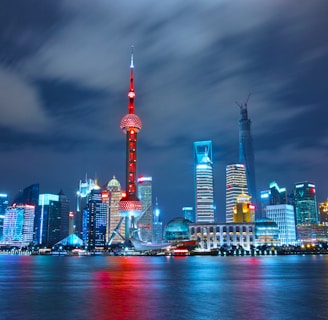China’s Call for Global Supply Chain Cooperation Amid Rising Trade Tensions


Introduction
Chinese President Xi Jinping met with global chief executives in Beijing, urging collaboration to safeguard industrial and supply chains amidst escalating trade tensions. This appeal comes as the U.S. considers implementing new tariffs, potentially disrupting international trade dynamics. Understanding the implications of these developments is vital for businesses and investors navigating the complexities of the global economy.
Context of President Xi’s Appeal
President Xi’s call for cooperation highlights China’s strategic emphasis on maintaining stable and resilient supply chains amid geopolitical uncertainties. The potential imposition of additional U.S. tariffs threatens to exacerbate existing trade disputes, underscoring the need for collaborative efforts to ensure the smooth functioning of global supply networks.
Economic Indicators Reflecting Trade Tensions
Recent economic data from the UK illustrates the broader impact of trade tensions:
• Retail Sales Growth: February witnessed a 1% increase in retail sales, continuing a positive trend from January.
• Trade Deficit Widening: The UK’s trade deficit expanded to £10.2 billion in Q4 2024, primarily due to declining exports.
• GDP Growth: The UK avoided recession in 2024, with revised GDP growth of 1.1%, indicating modest economic resilience.
These indicators suggest that while domestic consumption remains robust, external trade challenges persist, highlighting the interconnectedness of global economies.
Market Reactions to Trade Policy Uncertainties
The anticipation of new tariffs has led to notable market responses:
• Stock Market Declines: European stock markets have experienced downturns, particularly within the automotive sector, reflecting investor apprehension regarding potential trade barriers.
• Currency Fluctuations: Trade uncertainties have contributed to volatility in currency markets, affecting exchange rates and international trade competitiveness.
Strategies for Traders Amid Trade Tensions
Investors and traders can adopt several strategies to mitigate risks and capitalize on opportunities arising from trade policy developments:
1. Diversification: Allocate investments across various sectors and regions to reduce exposure to trade-related disruptions.
2. Monitoring Policy Changes: Stay informed about trade negotiations and policy announcements to anticipate market movements and adjust strategies accordingly.
3. Evaluating Supply Chain Exposure: Assess companies’ reliance on global supply chains and consider potential impacts on profitability and operations.
Conclusion
President Xi’s call for global supply chain cooperation underscores the critical importance of collaborative approaches in navigating trade tensions. For market participants, understanding the ramifications of trade policies and implementing strategic measures can enhance resilience and identify opportunities in an evolving economic landscape.


